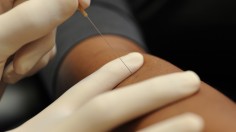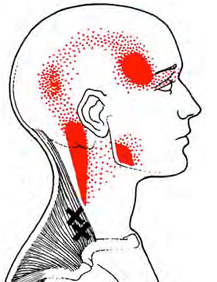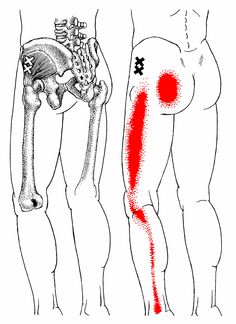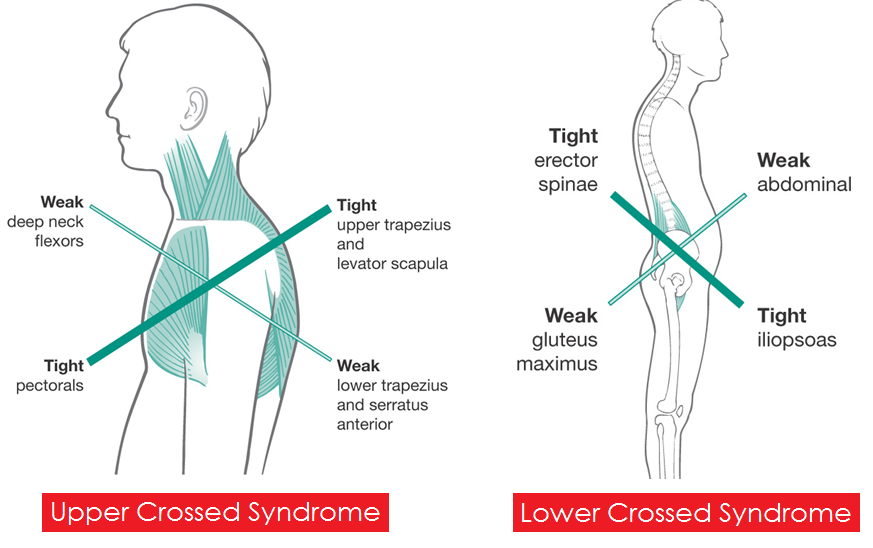
Myofascial pain syndrome is a fairly common pain disorder among adults. With this condition, pressure on sensitive areas in muscles can cause pain in other parts of the body. Dry needling is a manual medicine technique that treats this dysfunction. The following is a brief discussion about the technique, what it is used for, and how it can help you.
What is involved in dry needling?
Myofascial trigger points, or knots, are often the cause of pain, range of motion loss, weakness, postural dysfunction, and movement dysfunction. These trigger points can often lead to pain locally or far from the site of the trigger point when palpated or needled. Common syndromes caused by trigger points include neck pain, low back pain, sciatica, cervicogenic headaches, rotator cuff dysfunction, tennis elbow, patellofemoral pain, IT band syndrome, and plantar fasciitis.
Dry needling directly treats these trigger points. There are many types of dry needling techniques, but at SMARTherapy, we use Trigger Point dry needling. The technique involves inserting a thin filiform needle (the same needle used in acupuncture) to release trigger points in tissue. Dry needling is a safe and effective technique when used with proper training and precautions.
During treatment, the release is often felt by the patient as a sudden twitch within the muscle where the trigger point is found. After the release, there is typically a reduction in the tautness of the muscle fibers where the trigger point was found, increasing flexibility and range of motion, and improving strength and reducing pain. As a patient, you can often palpate these knots on various points of your body. Everyone has trigger points but not everyone needs them to be treated.
Examples of trigger point locations

Figure 2

Figure 1
In Figure 1, the “xx” markings show the trigger point for the gluteus medius muscle while the red areas show the referral pattern (where pain is felt). In Figure 2, the same dynamics apply, this time for the upper trapezius muscle.
Below are examples of conditions that lead to poor posture, which are caused by muscular dysfunction, and can be treated by dry needling. In Figure 3, the upper crossed syndrome shows how imbalanced tone (tightness) in the pectoral muscles leads to weakness in the lower trapezius and serratus anterior muscles on the opposite side. Tight upper trapezius muscles also inhibit deep neck flexors on the opposite side as well. Figure 4 shows the lower crossed syndrome, which follows the same principles. Another example (not shown) might be seen in the arms, where tight biceps (caused by too many arm curls) can lead to weak and over-stretched triceps, a common occurrence in high school weight rooms.

Figures 3 and 4
Prevention
You can learn how to prevent the formation of trigger points with proper education, therapeutic exercise, and a comprehensive home program. At SMARTherapy, you will learn what movements and postures contributed to the formation of your trigger points, how to prevent/manage them, and how to maintain an active lifestyle.
If you are currently in pain and suspect trigger points may be contributing to it, get a PT evaluation and diagnosis. Dry needling is an effective tool that, in the hands of a skilled professional, can be a fast and convenient aid in the road to recovery.
Want to know more?
For more information about dry needling or myofascial pain syndrome, email us or request an appointment. Be sure to follow us on Facebook and Twitter as well!
 Eric Liu is a physical therapist at the SMARTherapy Center at Washington Orthopaedics & Sports Medicine. He received his Doctor of Physical Therapy degree in 2013 and is a Certified Manual Physical Therapist. Eric specializes in a wide variety of techniques such as dry needling/myofascial release, joint mobilization, soft tissue mobilization, joint manipulation, and proprioceptive neuromuscular facilitation.
Eric Liu is a physical therapist at the SMARTherapy Center at Washington Orthopaedics & Sports Medicine. He received his Doctor of Physical Therapy degree in 2013 and is a Certified Manual Physical Therapist. Eric specializes in a wide variety of techniques such as dry needling/myofascial release, joint mobilization, soft tissue mobilization, joint manipulation, and proprioceptive neuromuscular facilitation.
